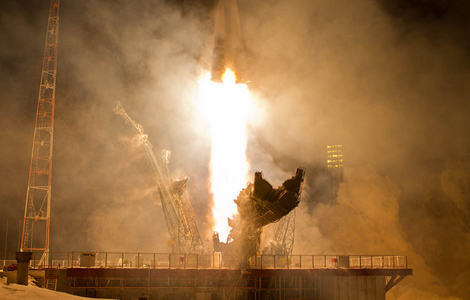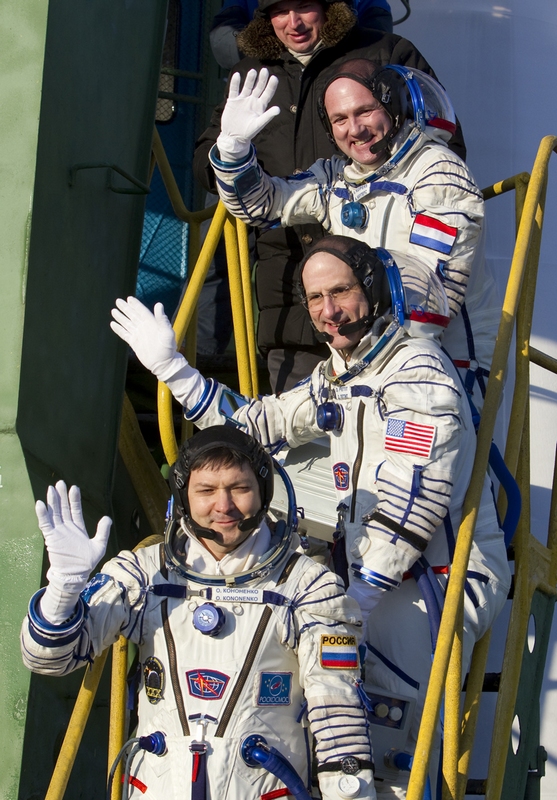What’s a Soyuz Launch Like?
For spaceships, there is no business class
As a newly arrived astronaut candidate in 1996, I was sitting in my first Space Shuttle mission debrief, listening to a crew report to the astronaut office on their just-completed flight. This is a special rite of passage for freshman astronauts, who learn from their more experienced elders. I was anxiously waiting to hear how the launch went. I wanted to know what it was really like. I was all ears when the commander began, “The launch was nominal.”
And that was it.
My mind was reeling with questions. How was strap-in orchestrated in the cockpit? What was it like being on the launch pad for six seconds with the main engines running, but the shuttle not going anywhere? What did you feel before, during, and after solid rocket booster separation? What could you see out the windows? What was it like to be in space for the first time?
All I got was: “Launch was nominal.” Deflated, I left not knowing what a launch was really like. I wouldn’t find out until my own first launch six years later. Maybe that was the real rite of passage.
Since then I’ve had the great fortune to launch into space on three occasions. My first two times were on Space Shuttle Endeavour, and this most recent one, in December, was on the Soyuz TMA-M03 “Antares.” The most notable difference between the two when strapping in your seat is cockpit volume. Soyuz is tiny compared to the Shuttle, which has pluses and minuses. From the engineering perspective, smaller is better, and cheaper to launch. From a crew comfort viewpoint, the Soyuz is cramped (I might even say cramped-squared). Once strapped in, my heels are nearly in contact with my butt. I am tied down at eight points to a form-fitting couch, making it difficult to move anything other than my arms. I can also swivel my head and wiggle my toes.
This may seem more like a medieval torture chamber than a rocket cockpit, but the tight enclosure is essential to protect your body from flailing around during the hard landings on the steppes of Kazakhstan. The danger comes from more than just flailing appendages—internal organs can move around, with undesirable results. High G-shocks can cause the heart to break loose from its mounts, rupturing the attached plumbing. The liver can slide down to where the kidneys used to be. Being tightly strapped into a form-fitting washtub helps keep all your internal organs in place. Because rockets can go bad without warning, the crew has to be ready for an abort and subsequent (hard) landing even during launch, so we assume this position whenever there is dynamic flight. For spaceships, there is no business class.
The closeout crew members are your friends, both at Cape Canaveral and at Baikonur. Dressed in white bunny suits, these highly trained specialists help you strap in and make sure everything is properly set in the cockpit. Then they close the hatch. Only then does it occur to you that these are the last persons on Earth that you will see until you return. Not your family, not your colleagues, but your closeout crew. I do not even know all of their names, but for that brief, emotion-packed strap-in moment, they became my family.
On the flight deck of the Shuttle, there are many windows. During launch there are moments, stolen from your relentless gaze at the computer screen, when you glance outside. I still have an image in my mind of a near-full moon out the pilot’s window during the launch of STS-126. It looked like our destination. In the Soyuz there are two windows that stay covered by a protective shroud for the first two and a half minutes after launch. Then abruptly, there is light. In our case, though, we launched on a moonless night, so there was nothing we could see.
We strapped in about two hours before launch. This confined position is not too bad for the first hour and a half. After that, my knees started to talk to me, and of course so did my bladder. Good thing I was wearing a diaper; thank God for rocket science.
Soyuz is powered by kerosene-oxygen rocket engines, which are relatively smooth and vibration-free compared to the Shuttle’s solid rocket boosters. (If you want to experience a shakedown, ride on a rocket powered by solids.) At engine ignition, Soyuz is slow to come out of the blocks—it just sits there for eight seconds or so. I could feel something was happening. There was vibration and a muffled, rattling noise. Something very powerful was stirring below, perhaps a sleeping dragon waking up in a bad mood. After a few seconds that seemed more like minutes, I could feel the acceleration as we lifted off. It started off low and slowly built up. The vibrations and noise actually decreased as we climbed away from the ground. The three of us, crammed in with our heels against our butts, were focused on the computer displays.
Rockets have stages; their engines and tanks are cast off when it’s time for the next stage to take over. During staging, there is a brief period between one set of engines shutting down and the next set igniting. Like an awkward pause in a conversation, you anxiously wait for something to happen. During that pause the acceleration or “G-forces” drop to zero, so the pressure of your spine against the seat disappears, only to be slammed back when the next stage lights. For our Soyuz, we were closely monitoring the third stage. Two launches before, on a cargo version of Soyuz called Progress, the third stage shut down shortly after staging, causing the cargo to be dumped somewhere in Siberia. We had abort options for the manned version, and were spooled up to react immediately if needed.
No matter what kind of rocket is launched, put a human on it and the seriousness of the event takes on a different cast. For mission control, launch teams, and spectators alike, emotions are on display that are normally reserved for events such as weddings. Joyful smiles, cheering, flushed faces, and teary eyes abound. For eight and a half minutes, a rocket lights up the night sky and a new star is born.
Stairway to the Sky
We climb the stairway
that leads beyond the clouds.
The sky is not the limit,
at least anymore.
Atop the launch pad,
a passage into cramped quarters.
Is this the way to Heaven,
or possibly the other place?
Most definitely not business class.
We are perched on a large bottle of gasoline,
a personified Molotov.
Waiting;
more angst in front of news cameras than sitting here.
And finally,
fires hotter than hell.
That transforms us into a point of light in the sky,
thus a new star is born.
Blasted into space,
or blasted into bits,
In either case you are no longer on this planet.

